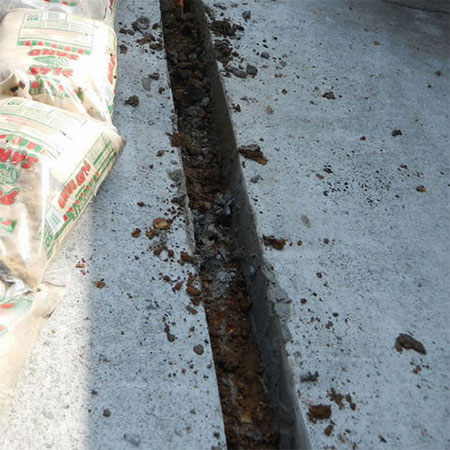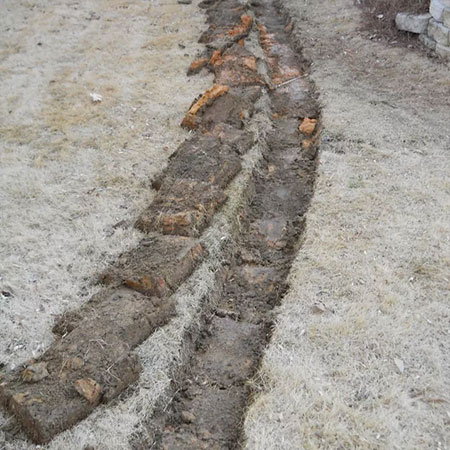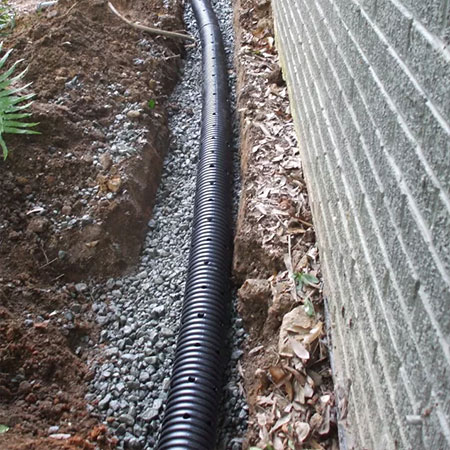Drain Water Or Direct Flow Of Water On Your Property
If your garden becomes flooded after rains or rainwater affects your property foundations, perhaps it's time to install a French Drain, a dry riverbed or a drainage gutter to direct rainwater away.
07/05/2021
http://thelandscapeguy.blogspot.com/
I know that I have touched on the topic of French drains before but I have not looked at the different methods that are available for putting in a French drain. The one I have in my garden is a PVC pipe option with holes drilled along the top and that leads to a large gravel bed that drains away excess water so as not to damage the foundations of my house. It has been installed for about 15 years and during that time, has effectively drawn rainwater away and prevented any damage.
If rainwater is causing flooding on your property or rainwater is affecting the foundations of your house, it is time to look at methods for re-directing rainwater away from your property. In this article, we look at various ways and means of directing excess rainwater away from your foundations, a patio or where it tends to pool around the grounds.
1. DRY RIVERBED
When you have a particular area where water tends to rush onto your property, say a garden sloping down from a main road, putting in a dry riverbed is an attractive solution to re-directing water away from a property. As the excess water runs down the dry riverbed, the soil underneath the riverbed channel offers a permeable surface through which rainwater can flow and dissipate into the ground.
When installing a dry riverbed, the intallation miust be wide enough and deep enough to allow for the flow of water that usually flows over your property. In this particular installation, excess rainwater from the road is channelled down the rocky bed to a lower area where it can pool and drain away.
Apart from the cost of the rocks to fill the riverbed, installing this is a DIY option you can tackle over a weekend and that will help to re-direct water from your house or garage.
2. GUTTER DRAINAGE
Where water pools around the foundation of a property, or where an impervious surface such as concrete blocks the flow of excess rainwater, another solution to consider is that of guttering fitted with a leaf catcher or drain filter. This type of installation drains water away before it reaches the foundations and causes expensive damage.
The gutter-style French drain is easy to install by digging or cutting out a channel to allow for fitting the gutter and drain. The gutter re-directs excess water to a point - or gravel bed - where water can drain in the ground or an area well away from the buildings.
A gutter drain is an ideal solution for areas where a concrete slab has been laid and where water tends to collect, such as on or around a concrete slab or a patio or entertainment area or when any other impervious installation has taken place that affects the natural flow of rainwater through a property.
It would be a wise decision to allow for this when first laying the concrete slab to avoid having to cut out a channel in the concrete slab to fit the gutter. While you don't always know when a problem is going to occur due to the installation of a concrete slab for a patio or entertainment area, it's always best to give this some thought beforehand.
3. FRENCH DRAIN
There are many variations on the French drain principle, all of which work well for re-directing excess rainwater away from the foundations of a structure. Most of these can be done by anyone prepared to get stuck in and do it themselves
What is important when digging out for a French drain is the depth of the trench. A good depth is about 600mm with a width of approximately 300mm.
After digging to the recommended depth, the trench can then be filled with gravel that acts as a permeable material to allow the flow of water into the surrounding ground. Although the channel shown in this project is close to the property foundation, it is better to allow a distance of at least 1 metre from any structural foundations.
A drainage pipe or hose is laid on top of the gravel bed before being covered with additional gravel. This method allows the free flow of water into the drainage pipe or hose, or the surrounding area, and to be channelled away to an area that will allow the water to flow away from foundations.
In my particular instance, I used a drainage pipe with holes drilled in the top to allow excess water to drain into the pipe and away from the side of the house.
BOTTOM LINE
An important aspect of maintaining a French drain is to ensure that no soil or sand enters the system, as this will eventually build up inside the hose or pipe and block the flow of water. If you need to install a French drain where this may become a problem, such as close to beds and borders, allow sufficient distance away to prevent the French drain from failing down the line.
GOOD TO KNOW: Adding a layer of landscape fabric or geotextile to the gravel layer on top of the pipe or hose will cut down on sediment build up in the drainage system.
Builders offer the Marley Underground Landrain Pipe as well as the EasyDRAIN Channel and Grate.













